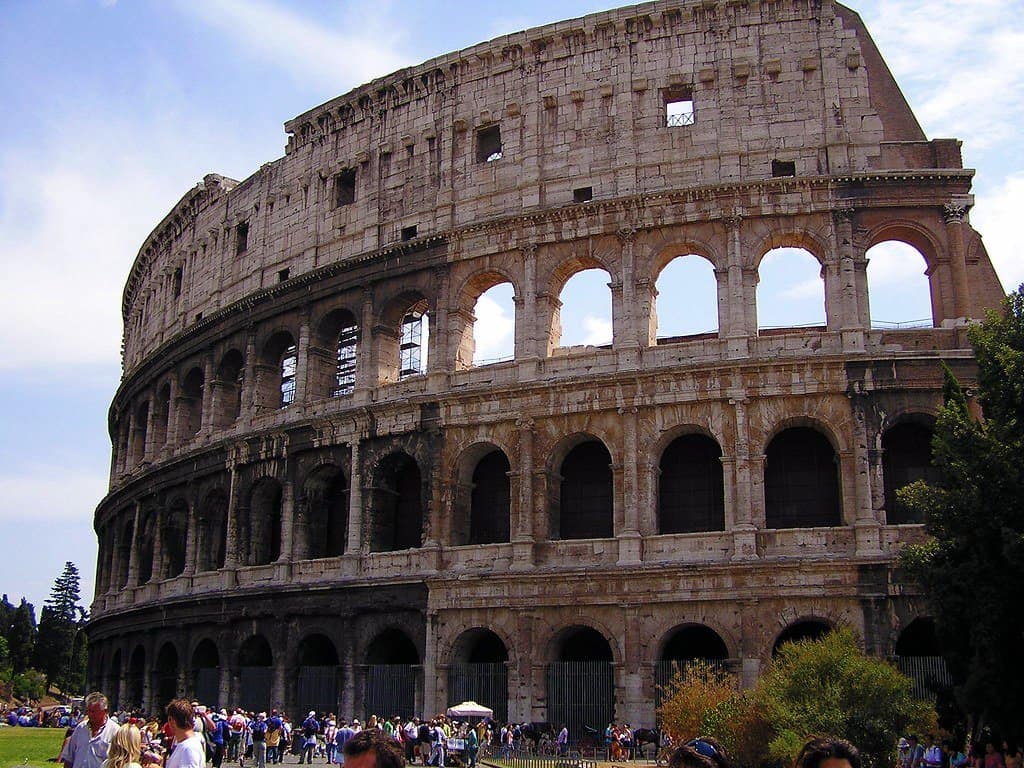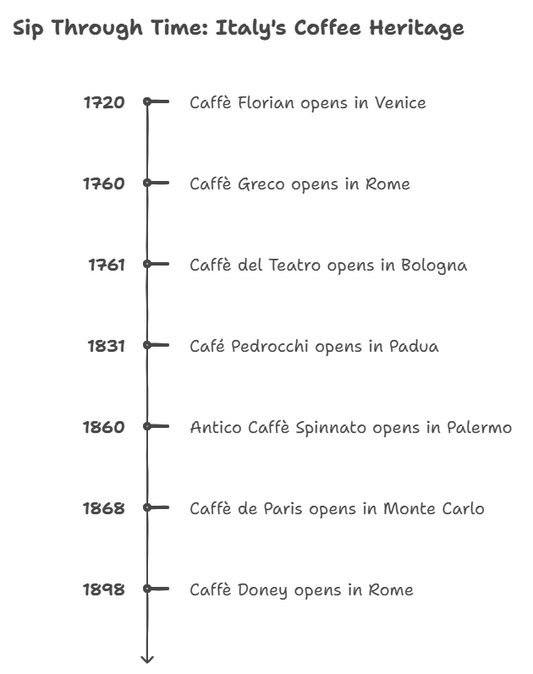Nowadays, modern skyscrapers are designed using the latest instruments of technology and economy. While in the past buildings were created by collective efforts. However, these ancient human-made cultures are still better than science and architectural technology.
In this article, you will find out the tallest buildings in ancient Rome as followed.
- Roman Colosseum (57m in height)
- Pont du Gard (49m in height)
- Pantheon (43m in height)
- Aqueduct of Segovia (28m in height)
- Diocletian’s Palace (26m in height)
- Amphitheater, Nimes (21m in height)
- Library of Celsus (21m in height)
- Temples of Baalbek (21m in height)
- Maison Carree (17m in height)
9 Tallest Buildings in Ancient Rome
There are lots of tall buildings in Rome. We are talking about ancient times. Let’s have a look at these tall buildings (tallest known height is in bracket)
When the famous amphitheater, Colosseum, was built in ancient Rome, its area was 189 by 159 meters, and by that time, it was the largest amphitheater. Construction of this most popular and ancient Colosseum began during the reign of Emperor Vespasian in 72 AD. His son, in 80 AD, completed it. Such an amphitheater was never seen before this, and it has the seating capacity of more than 50,000 people.

To accommodate that many spectators, almost 80 different entrances were installed. The more surprising thing about this Colosseum is the opening ceremony lasts for about 100 days. During that time, almost 2000 gladiators and 5000 animals fought to their death in fiction battles.
It is one of the few surviving aqueducts that were built during the Roman Empire. It was build during the first century AD in the middle of France. Engineers build this aqueduct without any mortar.
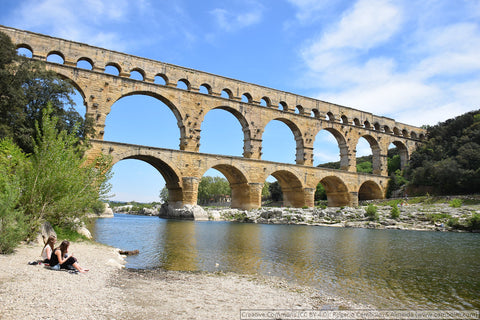
Roman engineers show their expertise and by fitting cut stones precisely into a three-story masterpiece. The height of the bridge is measured to be 360 meters, and each block of stone weighs about six tones each. This magnificent place is 50 km in length. This marvel supplies water to the city Mines. Until the 18th century, it was used as the conventional bridge throughout the middle ages.
Without any doubt, it is the most well-preserved architectural marvel from ancient Rome. This temple was different from the rest of the temples that were specific for only the Roman gods.

During the rule of Hadrian in 125 AD, the construction of this temple was completed. It has a large and beautiful circular portico that opens towards the rotunda. A majestic dome covers the rotunda. It is tested for the engineers and Roman architects to estimate the sheer size and scale of the dome. You can judge its built quality by the fact, it has survived more than 2000 years, and it has survived natural disasters and corrosion.
It is located on the Iberian Peninsula and still retains its integrity. It is one of the best-preserved pieces of architecture from ancient Rome. The purpose of its construction was to facilitate the flow of water from river Frio to the city Segovia. 24000 giant blocks of granite were used to build this 16 km-long structure. Roman engineers built this majestic place without mortar.

It contains 165 arches, and all the arches are 30 feet in height. After years of neglect, this place has gone through an extended period of reconstruction during the 15th and 16th centuries. To preserve the glory of this monument some quick actions were taken during the 1970s to 1990s.
Roman Emperor Diocletian prepared this famous building for his retirement. Diocletian has been credited for being the first Roman emperor who voluntarily resigned from his position. He told the reason behind resign was declining health issues. After his retirement, he went to this majestic place to spend the rest of his life. Its walls are about 26 meters high, and this palace covers 215 meters area. In the Middle Ages, Christians also used this palace as a cathedral. Currently, this palace has been declared as a world heritage by UNESCO and a popular archaeological attraction in Croatia.
This famous tomb was dedicated to the famous governor Gaius Julius Celsus Polemaeanus. Son of Celsus ordered the construction of this architect. It turned out to be the repository for the important documents.

It has magnificent interior and exterior architectural designs. These designs make it the most impressive building of ancient Rome. The entire structure of the building is supported by the nine-step podium, and the height of these podiums is 21 meters.
It is considered to be the most spectacular wonders of ancient times. This temple has been credited to be the most prestigious, largest, and well-preserved Roman temples. The first Baalbek was built in the first century, and over the next 200 years, Romans built three more.
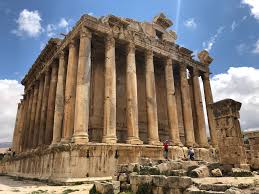
The largest temple among them was Jupiter, and it was 21 meters tall. Today only six temples are present, and their height is enough to show the majesty of Baalbek.
When this famous amphitheater was built in the city of Nimes, by that time, the city was known as Nemausus. Augustus started to give it a structure of typical Roman state and to populate the city in 20 AD.
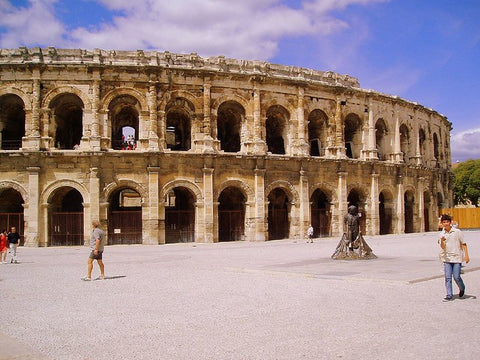
The city contains lots of splendid buildings, 200 hectares of land, surrounding wall, and a magnificent theater at its heart. This majestic amphitheater located in Gaul has a seating capacity of almost 24000 people, and it is the biggest amphitheater in Gaul. Its area was so vast that during the Middle Ages, a fortified palace was build inside it. After sometime around 1863, it was converted into the bullring, and still, it is used for hosting of annual bullfights.
The only temple that was constructed during the time of ancient Rome, and it is still preserved today. This fantastic temple was built around 16 BC in Nimes. This majestic temple has a length of 26 meters and 17 meters tall.
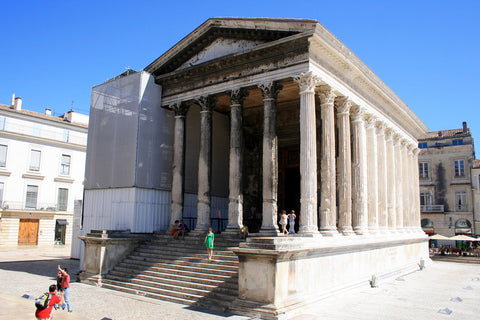
This place was given a fresh lease of life, and in the fourth century, it was converted into a Christian church. This timely decision protected this temple from destruction faced by the other Roman landmarks. Since then, it has been used for many purposes, such as stable, storehouse, and town hall. Currently, it is a museum.
